Road to the Centennial
You may have noticed some new road signs around campus and wondered, "Why were these names chosen?" Each name has a specific tie to the history of Marywood or the IHM Congregation. As we approach Marywood's centennial in 2015, we celebrate our cherished history and recognize those who provided the strong foundation that still supports our progress today.

Maxis Lane
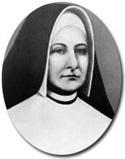 Mother M. Theresa Maxis, IHM was a Co-founder of the IHM Congregation. Mother Theresa Maxis' life from the beginning was paradoxical, a contrast of advantage and liability which amazingly combined to create a determined and responsive personality and ultimately, a resourceful and dynamic leader.
Mother M. Theresa Maxis, IHM was a Co-founder of the IHM Congregation. Mother Theresa Maxis' life from the beginning was paradoxical, a contrast of advantage and liability which amazingly combined to create a determined and responsive personality and ultimately, a resourceful and dynamic leader.
Born of unwed parents and of mixed racial lineage into a society that held both conditions in contempt, she nevertheless received a rearing and education far superior to most women of her time, attributed to the kindness of her adoptive family, the Duchemins. Through them she was immersed in the French language, culture, and heritage. These resources were pivotal in the development of her life and provided her with the key to open doors otherwise closed to her.
At age 19, Theresa became a founding member of the Oblates of Providence, the first congregation of women religious of color in the world. In this Baltimore-based congregation, she served as superior general and assistant to the superior general. During this time, she met Father Louis Florent Gillet, a Redemptorist who was seeking to establish a congregation in Monroe, Michigan, to teach the French immigrants, especially Catholic French Canadian girls.
She left the Oblates and set out for Monroe where, with Father Gillet, she founded the Sisters, Servants of the Immaculate Heart of Mary, in a humble log cabin on the banks of the Raisin River on November 10, 1845. In 1858, as the congregation grew in size and renown, Mother Theresa accepted Bishop John Neumann's invitation to serve in the Diocese of Philadelphia, and, in 1871, a new foundation was established in the newly formed Diocese of Scranton. Today, there remain the three distinct branches of Sisters of IHM whose fervor and spirit have ever kindled the spark of Father Gillet and Mother Theresa.
Gillet Lane
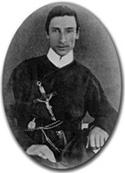 Father Louis Florent Gillet was a Co-founder of the IHM Congregation and a Redemptorist priest/missionary. Francis Louis Florent Gillet was born in Antwerp, Belgium, January 12, 1813. At age 20, Louis entered the Redemptorist House at St. Trond, Belgium. Two years later, he pronounced his religious vows, and on March 10, 1838, he was ordained a priest.
Father Louis Florent Gillet was a Co-founder of the IHM Congregation and a Redemptorist priest/missionary. Francis Louis Florent Gillet was born in Antwerp, Belgium, January 12, 1813. At age 20, Louis entered the Redemptorist House at St. Trond, Belgium. Two years later, he pronounced his religious vows, and on March 10, 1838, he was ordained a priest.
His great desire was to join his brother priests who had begun missions in the United States. He did so in 1843, preaching many successful missions, one of which was in Monroe, Michigan. The parish was to become a missionary base for the Redemptorists. Father Gillet became pastor of the church and superior of the Monroe foundation.
In 1844, Gillet met Theresa Maxis, a member of the Oblate Sisters of Providence in Baltimore. He convinced her of the great needs of the children in Michigan, and, in 1845, she left the Oblates to establish the Congregation of the Sisters, Servants of the Immaculate Heart of Mary with him.
Jackson Court
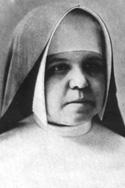 Mother Mary Magdalen Jackson, IHM was the first IHM postulant to be professed in the Scranton Diocese and the first elected Superior General of the Congregation-her predecessors had been appointed by the bishop.
Mother Mary Magdalen Jackson, IHM was the first IHM postulant to be professed in the Scranton Diocese and the first elected Superior General of the Congregation-her predecessors had been appointed by the bishop.
An accomplished musician, she started specialized higher learning for the Sisters in the late 19th century, well before women in the U.S. had won the right to vote. It was a time when college degrees for lay women were limited and, for religious, virtually non-existent.
With the help of Rev. Daniel J. MacGoldrick, she established a center to which Sisters could come for advanced courses in science, mathematics, philosophy, languages, and education. By the summer of 1897, the first Teachers' Institute for Sisters was held at St. Thomas College Hall with lectures by guest scholars in art, education, and psychology. The Congregation opened these classes to all sisters of the area who wished to participate. Mother Mary Magdalen also began enrolling as many sisters as possible in State Normal Schools and various training institutions.
She purchased the acreage in the Green Ridge section of Scranton that eventually became the site of Marywood.
Foster Lane
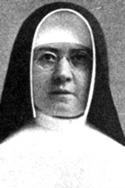 Mother Mary Crescentia Foster, IHM was appointed by Bishop Hoban to serve the remainder of Mother Mary Magdalen Jackson's unexpired term, following her predecessor's death in 1899.
Mother Mary Crescentia Foster, IHM was appointed by Bishop Hoban to serve the remainder of Mother Mary Magdalen Jackson's unexpired term, following her predecessor's death in 1899.
She oversaw the groundbreaking of the Motherhouse on July 19, 1900, and initiated construction. All that was on the property at the time was a carriage house, a greenhouse, and a cottage. Mother Mary Crescentia concluded her term as Superior in 1901, leaving to her successor, Mother M. Cyril Conway, the duty of establishing the Motherhouse.
Conway Circle
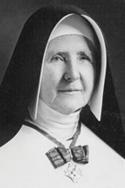 Mother M. Cyril Conway, IHM guided the construction of the Motherhouse, named the campus Mount St. Mary of the Immaculate Conception, and decided that the new high school would be called a Seminary rather than an Academy. (Right from the beginning, it was to be a place where serious study was expected to lead to college.)
Mother M. Cyril Conway, IHM guided the construction of the Motherhouse, named the campus Mount St. Mary of the Immaculate Conception, and decided that the new high school would be called a Seminary rather than an Academy. (Right from the beginning, it was to be a place where serious study was expected to lead to college.)
When the Lackawanna and Wyoming Valley Railroad announced a plan to extend its line from Scranton to Carbondale on a proposed route that cut directly across the campus, she confronted the railroad officials and convinced the authorities to select an alternate route for their proposed expansion. (Our Lady of Victory shrine was erected in thanksgiving for this outcome.)
Mount St. Mary's Seminary officially opened on September 8, 1902. During her terms in office (1901-1913), the Seminary property and buildings became debt-free. Continuing in the tradition of Mother Mary Magdalen, Mother Cyril was driven to educate women, especially women religious, at a time when this was still fairly uncommon. Her persistence ensured that many sisters attended college programs at state universities until Catholic universities eventually accepted them.
In 1910, Mother Cyril started laying the groundwork for establishing Marywood College. By the time she left office in 1913, she had firmly planted the concept of a college and had provided for the academic and administrative preparation of the sisters who would become its first leaders.
O’Neill Circle
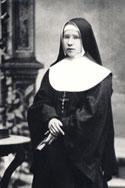 Mother M. Germaine O’Neill, IHM, Mother Superior from 1913-1919, established the college, named it Marywood, drew up the first catalog, and recruited the first freshman class. She was also the first president of Marywood.
Mother M. Germaine O’Neill, IHM, Mother Superior from 1913-1919, established the college, named it Marywood, drew up the first catalog, and recruited the first freshman class. She was also the first president of Marywood.
Mother Germaine was the author of several books of poetry and the first president of Catholic University’s Sisters’ Alumnae Association.
In 1917, after a site visit by the College and University Council, Marywood secured its charter and became the state’s first Catholic college for women empowered to grant the Bachelor’s degree. In 1918, Mother Germaine convinced Fordham University to open a graduate summer session for sisters.
Gillespie Circle
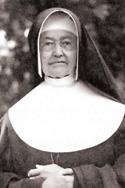 Sister M. Immaculata Gillespie, IHM served as Dean of the Marywood from 1915 to 1943. She was a magnetic presence beloved by the students.
Sister M. Immaculata Gillespie, IHM served as Dean of the Marywood from 1915 to 1943. She was a magnetic presence beloved by the students.
In 1921, she received a doctorate from Fordham University, becoming the first regional woman to earn a doctoral degree. Sister Immaculata led Marywood through all of the initial accreditation processes, including charter membership in the Middle States Association of Colleges and Secondary Schools. She also wrote a history of the Scranton IHM Congregation.
Even though various presidents presided over Marywood during her tenure, the actual administration of the College was the responsibility of Sister Immaculata. Her influence on Marywood's growth and development was remarkable. The vast changes she witnessed during her lifetime, 1863-1947, were astounding. She responded with an openness to the challenges of life that gave Marywood its dynamism and confidence throughout many difficult years.
Hurley Circle
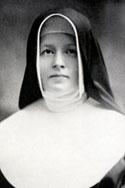 Mother M. Josepha Hurley, IHM, Mother Superior and President from 1931 to 1940, was a skilled administrator who kept Marywood on a sound fiscal course in the post depression years. During this period, Marywood earned several additional accreditations.
Mother M. Josepha Hurley, IHM, Mother Superior and President from 1931 to 1940, was a skilled administrator who kept Marywood on a sound fiscal course in the post depression years. During this period, Marywood earned several additional accreditations.
In 1937, Mother Josepha declined an "invitation" to merge with St. Thomas College, which was at the time experiencing financial difficulties. She was unwilling to jeopardize either Marywood's individuality or its solvency. In 1938, St. Thomas College, staffed by the Christian Brothers, reorganized as the University of Scranton. In 1942, the University of Scranton was placed in the hands of the Society of Jesus.
During Mother Josepha's term, the interior of the Rotunda was completed, a project that had been deferred since 1924. Artist Gonippo Raggi was commissioned to paint the murals that still adorn this local historic landmark. In 1943, Mother Josepha's successor, Mother Marcella Gill ended the tradition of having one person serve as Mother Superior of the Congregation and President of the College.
Morgan Road
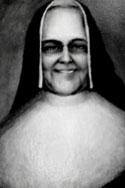 Sister M. Sylvia Morgan, IHM became the first full-time president of Marywood in 1943. She had taught all of the science courses offered when Marywood first opened in 1915 and served as chairperson when the departmental faculty increased.
Sister M. Sylvia Morgan, IHM became the first full-time president of Marywood in 1943. She had taught all of the science courses offered when Marywood first opened in 1915 and served as chairperson when the departmental faculty increased.
In 1934, she was admitted as a fellow of the American Association for the Advancement of Science. She engaged in scientific research during extensive periods of study at the College of New Rochelle, Fordham University, Notre Dame University, and American University and developed lab manuals in biology and chemistry. She earned her doctorate at the University of California.
Sister Sylvia guided Marywood through the war years and oversaw an expansion in enrollment and in program development. Before she left office, Sister Sylvia also oversaw the redesign and adoption of the official Marywood seal-a design that persists to this day. She served as president until 1949.
- Facebook
- Twitter
- YouTube
- Instagram
- Snapchat
- LinkedIn
- TikTok
#PacerPride